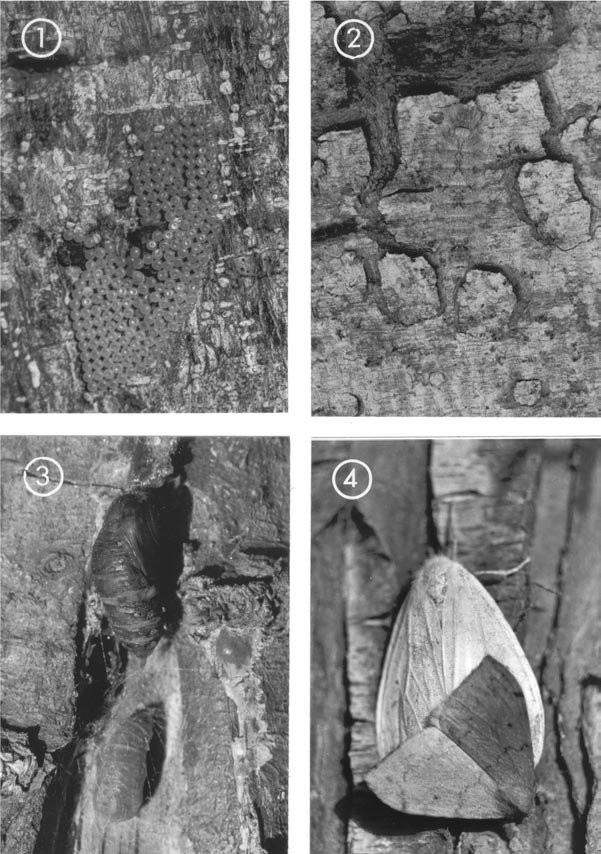African Mahogany-Feeding Caterpillar
Several genera and species of mahoganies in various parts of the tropics are highly valuable timber species, among them African mahogany (Khaya spp.). Relatively few defoliators are known to target this genus, among them caterpillars of several silkmoths, the nymphalid Charaxes and the lymantriid Heteronygmia. Only the latter, presumably monophagous on Khaya, appears to have pest potential as indicated by small-scale outbreaks observed in Morogoro, Tanzania, in the 1980s.
A succession of four generations per year allow Heteronygmia dissimilis to be active most of the year, except for a period of estivation during the hottest season, i.e., from November to February. Eggs are found from early March to late October with peaks from May to August, i.e., during the cool, dry season. Egg clusters are located mostly on the lower trunks of trees and consist of
Caterpillars of various instars are found anytime between early March to the end of November, with periods of greatest abundance from June to September. All larval instars are hairy and last instars occur in two color phases. One of them is milky-green; the other, more common one, a highly camouflaged, brown to greyish-white mottled bark pattern including up to three, more or less distinct dorsal saddles. Caterpillars feed solitarily, and move with great speed and agility when disturbed, including a hopping and ballooning response during the first four instars. Early instars skeletonize Khaya leaflets at night and spend the day motionless on or underneath leaflets. Older instars are free feeders and rest on the lower trunk during the day. All instars shun the foliage of just-expanding shoots. There are five instars in males and six in females, each of them lasting from
Pupae are found from late February to early December, abundantly so from June to September. They oſten are cradled in loose leaf shelters tied together by sparse strands of silk or in other hiding places, such as under bark scales.
The moths are present from February to
While no field control of Heteronygmia has been undertaken to date, a laboratory study documented full protection of Khaya leaves from defoliation by H. dissimilis, following application of 1% crude, aqueous seed extracts of the neem tree (Azadirachta indica).
Numerous arthropod predators of the caterpillars and pupae are believed to be generalists with little impact. On the other hand, four hymenopterous and two dipterous parasites affecting various stages of H. dissimilis seem more specific. Seasonally, egg parasites in particular had significant impacts on this insect and in conjunction with the fungus Paecilomyces farinosus, which severely decimated pupae during the rainy season, were responsible for serious setbacks in the annual buildup of H. dissimilis. As a result, natural controls seem to be quite effective with this insect.

Egg (top left) (2x), last instar larva (top right) (1x), pupa (bottom left) (1.7x) and (mating) adult stages (bottom right) (2x) of Heteronygmia dissimilis

African Horse Sickness Viruses


